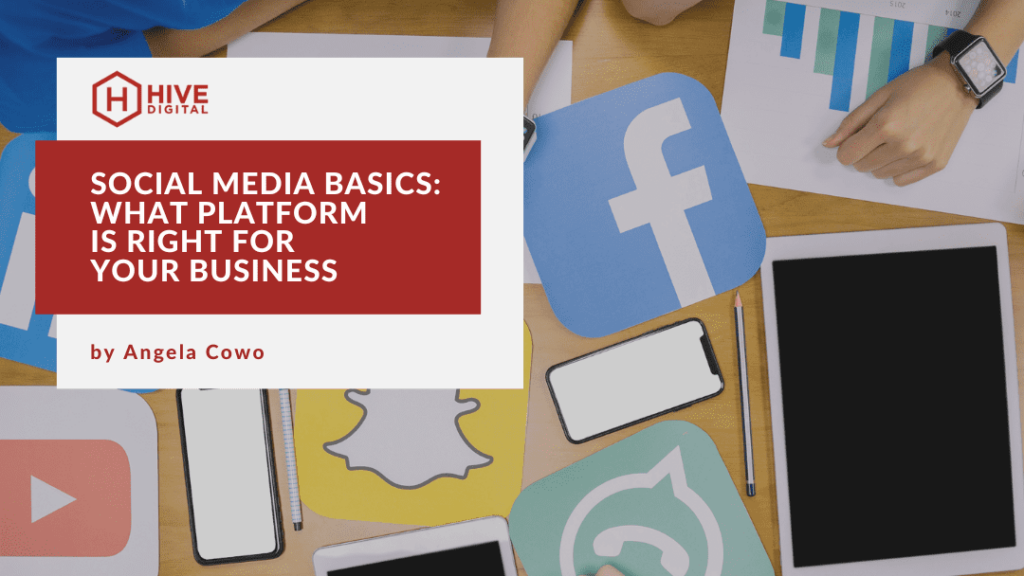Building social media accounts for your business can be a daunting ordeal. Not all social media platforms are the same and can be hard to choose what platforms are right for your business. Social media is a very powerful tool to help your business connect and cultivate relationships with clients from local to around the globe. Sprout Social reported that in 2023, there are estimated to be 4.98 billion total social media users worldwide.
Why is choosing the right social media platform for your business important?
Social media marketing is all about being strategic with what tools you have at your disposal. Large companies have dedicated teams and resources to build a brand on social media whereas smaller businesses have to be more thoughtful about what platforms they want to spend their time and energy on.
First, we need to answer a couple of questions:
What are your goals?
Are you trying to build awareness for your brand or sell a product?
What platforms are your competitors using?
Do you have a dedicated team or person who will manage these accounts?
What is the target demographic that makes up your audience?
Answering these questions will help you figure out what platforms are right for your business so that you can spend your valuable time on the right platform that will best help your business grow. Let’s do a breakdown of the current social media platforms and which ones are best for a business. Starting off with the five most often used socials in the North American region.
Facebook: According to Sprout Social, 70% of American Adults use Facebook and almost a quarter of Facebook users in the US are between the ages of 25-34. This is a massive audience especially if your business primarily focuses on the US market. While there’s no guarantee that every single person on Facebook will view your posts or even know about your business/account, even reaching a small percentage of people on Facebook could do wonders for your organic social media strategy.
Instagram: Hubspot reports that Instagram has had the largest ROI for selling products, which is not hard to believe as it nearly has over 2 billion users worldwide on the platform. Instagram caters to a younger audience than Facebook does with around 61% of total Instagram users being between the ages of 18-34.
Twitter: This platform has around 556 million monthly active users worldwide with more than half identifying as male. Twitter is a short-form style of social with limited character and word count with users looking for bite-sized snippets of information. However, there are opportunities such as with Twitter spaces to be able to host more content. With the change in leadership, Hubspot reports that around 71% of marketers “plan to spend less time on Twitter”.
LinkedIn: On the other hand, LinkedIn is known more as a professional sort of social media. This lends the platform to be more useful for B2B brands. While LinkedIn has “fewer” users than a powerhouse such as Instagram or Tiktok, it still boasts around 900 million users worldwide. This platform is also more niche as it is business focused as opposed to other platforms.
Tikok: This platform is the fastest-growing social media network, almost doubling users from 2020 to 2022 to over 1 billion users worldwide. 38.9% of users are between the ages of 18 and 24 so a younger audience than Facebook and possibly even Instagram. TikTok is primarily a short video platform (with the exception of a carousel-style photo option) and most users are looking for entertainment-style content.
Should my business be on every social media platform?
The short answer is no. The longer answer is that your business can be on every platform if you have the time and resources for it. However, it’s important to remember that posting isn’t enough, people want engaging and entertaining content that helps tell a story. Content creation and social media management can be demanding and time intensive. Not all platforms are created equally, some platforms like TikTok are video heavy and rely on you having the time to create, edit and post videos. Whereas other platforms such as Twitter rely more on word count. Some platforms are best for building awareness while others work well for conversion, especially for e-commerce clients.
Now that you know what platforms are growing the fastest and what ages the users are primarily, you can make decisions based on what your target audience is. If you’re mostly targeting older adults then perhaps Facebook is the right platform, if you’re targeting a younger audience maybe Gen Z then Tik Tok or Twitter might be your platform, if you’re focused on B2B then LinkedIn is calling, and if you’re just unsure which platform to choose then perhaps Instagram is right for you.
After identifying what platforms will work best, the next step is creating these accounts and making sure they are professional and reflect your brand properly.
References:
https://blog.hubspot.com/marketing/hubspot-blog-social-media-marketing-report
https://blog.hubspot.com/marketing/is-twitter-dying
https://sproutsocial.com/insights/social-media-statistics/










